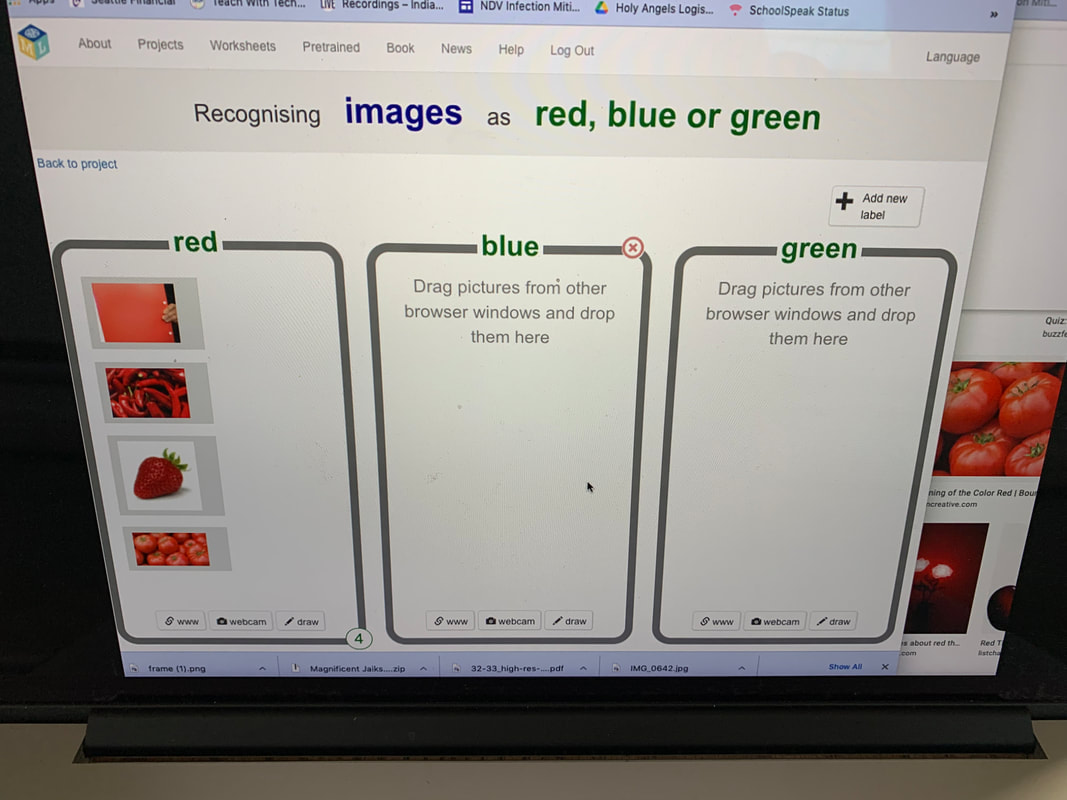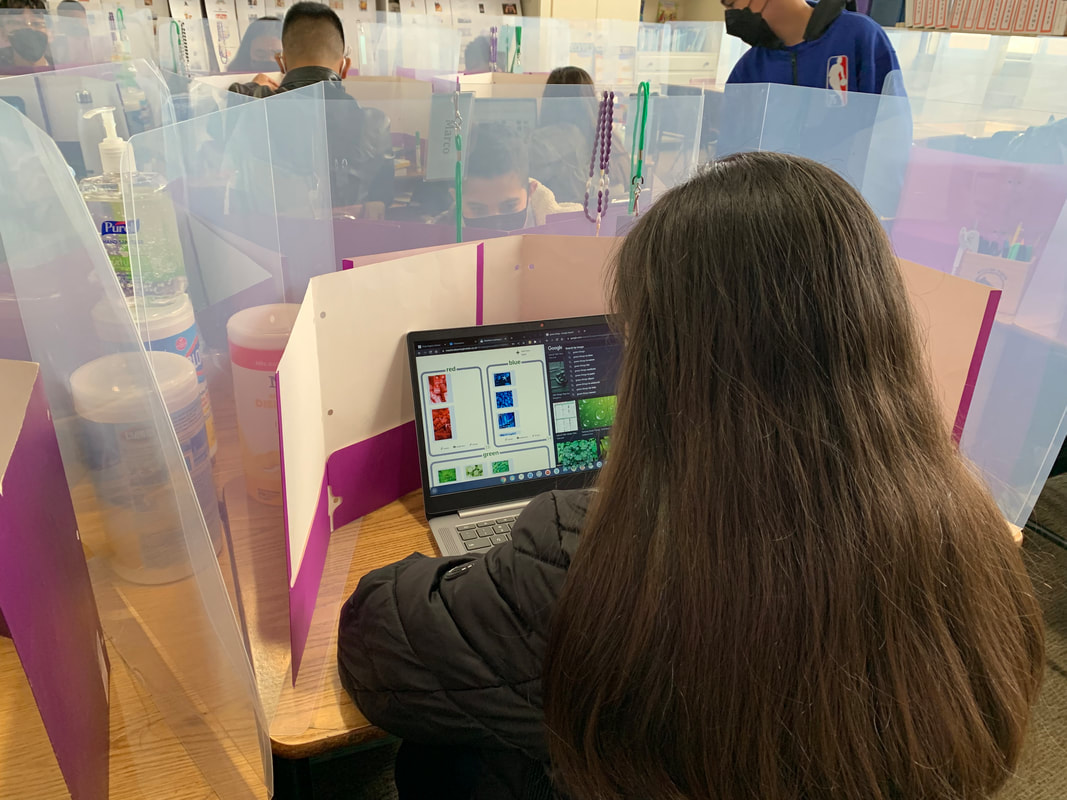|
Long before ChatGPT gained popularity, Holy Angels' middle school students have been engaged in learning about artificial intelligence through a comprehensive curriculum that includes Machine Learning for Kids, Code.org, and Google Applied Digital Skills during computer class. As AI continues to integrate into education, it becomes crucial for both teachers and students to understand how AI functions, its inherent biases, and its ethical application in the context of learning and teaching. The students have been actively involved in various AI projects that demonstrate their practical understanding of the concepts. One notable project involves training a computer to recognize red, green, and blue colors. By providing the machine model with a diverse set of images containing objects of these colors, the students taught the computer to distinguish between them. In the project below from Machine Learning for Kids, after training a machine model, students made a chameleon in Scratch that changes color to match its background. Additionally, the students trained a machine to differentiate between compliments and insults. Using another project from Machine Learning for Kids, students developed a Scratch program wherein a character's response varied based on the input received. If the user conveyed a kind message, the character would respond with a smile, but if the input was negative or insulting, the character would frown or display emotions of distress. In the video below, shot during the Covid lockdown, sixth graders explain what they learned about artificial intelligence and machine learning during distance learning. The students also delved into facial detection and created fun face filters using Scratch Lab, a platform that allowed them to showcase their creativity and apply their newfound knowledge. Furthermore, the curriculum's focus on real-life examples of AI in everyday apps and devices enables the students to grasp the relevance and impact of AI in their lives. As they train machine models, they come to realize the vital role of human data in influencing AI responses, highlighting the significance of unbiased and ethically-sound data collection.
We plan to expand the AI curriculum further. Starting from kindergarten, students will be introduced to the fundamental principles of AI and machine learning using Hands-On AI Projects for the Classroom from ISTE (International Society for Technology in Education). Additionally, the middle school curriculum will incorporate MIT's Ethics of Artificial Intelligence Curriculum for Middle School Students, emphasizing the importance of ethical considerations in AI development and deployment. By empowering students with these essential AI skills and insights, Holy Angels' approach ensures that the next generation is well-prepared to navigate the evolving landscape of artificial intelligence responsibly and innovatively. |


 RSS Feed
RSS Feed